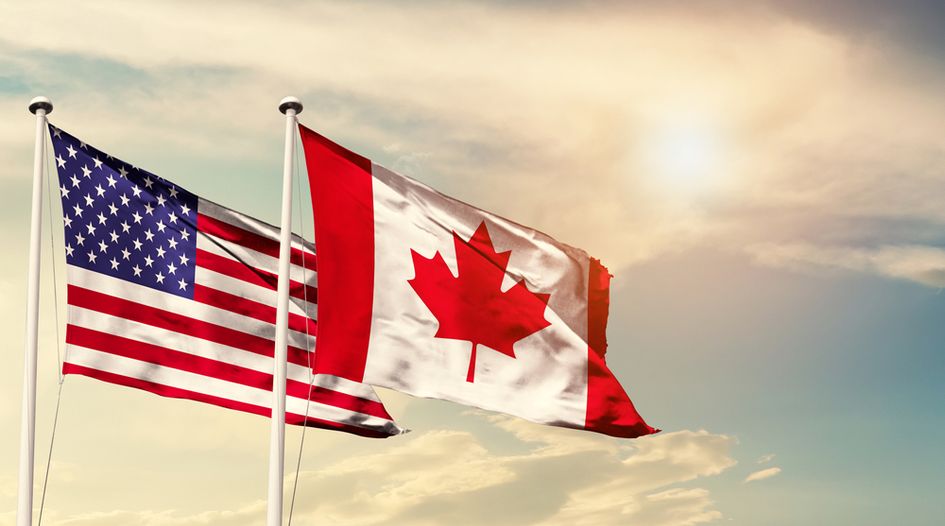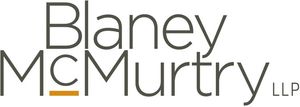Comparison of Canadian and US approaches to patentability and infringement issues

This is an Insight article, written by a selected partner as part of IAM's co-published content. Read more on Insight
Introduction
The United States and Canada are deeply integrated on many levels, from their shared international border to commonalities in culture and language, as well as intertwined economic relationships. The US and Canada also share common roots in their legal systems, with many overlapping rules and principles, as particularly evident in patent law. However, potential inventors, patent holders, stakeholders, industry professionals and legal experts should also be aware of fundamental differences that may have practical implications on intellectual property (IP) strategy.
This article will explore how the US and Canadian regimes differ on three patentability and patent infringement-related issues: (1) whether a prior sale of a product bars patentability, (2) the question of how similar a product could be without infringing on a patented invention and (3) infringement in the context of the skinny label pathway for drugs.
On-sale bar
In the US, the statutory on-sale bar precludes an inventor from obtaining a patent if the invention was commercially sold or offered for sale before the effective filing date.
Specifically, 35 USC § 102(a) of the America Invents Act (AIA) provides that a person shall be entitled to a patent unless ‘the claimed invention was patented, described in a printed publication, or in public use, on sale, or otherwise available to the public before the effective filing date of the claimed invention’.
This bar applies when the invention is found to be the subject of a commercial offer for sale and is ready for patenting. A commercial sale agreement with a third party who is under an obligation of confidentiality, or a secret sale, is still encompassed by the catchall phrase ‘otherwise available to the public’ and thus triggers the on-sale bar.
In Canada, there is no standalone on-sale bar provision under the Canadian Patent Act. Rather, the concept of a prior sale barring patentability arises in the context of public sale or use and is relevant to the doctrine of novelty.
The requirement that an invention be novel is rooted in the definition of ‘invention’ in section 2 of the Patent Act: ‘any new . . . art, process, machine, manufacture or composition of matter, or any new . . . improvement in any art, process, machine, manufacture or composition of matter’.
Whether a claimed invention is new (novel) is grounded in subsection 28.2(1) of the Patent Act, which requires that the claimed subject matter must not have been previously disclosed before the applicable disclosure deadline. If this subject matter has been previously disclosed before the applicable deadline, the claim is invalid for being anticipated.
Anticipation is assessed by determining whether the single prior disclosure, when understood by the skilled person, provides both (1) a description of the claimed invention (disclosure) and (2) sufficient instructions to enable the invention to be practised (enablement).
The prior sale or use of an invention in Canada does not function as an automatic bar. Instead, it can only bar patentability if it provides an enabling disclosure of the claimed subject matter prior to the applicable disclosure deadline for the pending application. To have disclosed the claimed invention, the prior sale must provide the skilled person with information sufficient to comprehend the invention. The ability to reverse engineer the product without inventive effort may also be relevant to the consideration of enablement.
In the US, a secret sale of an invention will invalidate a US patent irrespective of where it happened because the AIA removed the geographic limitation of the prior art disclosure. In Canada, however, if an invention is disclosed to a third party who is expressly or impliedly obliged to keep the invention confidential, it is not considered a public disclosure to bar patentability.
Both jurisdictions provide a one-year grace period for inventor-derived disclosures. If the prior sale or use of the invention has occurred directly or indirectly through the inventor, such disclosures originating from the applicant occurring during the grace period will be excluded as prior art. In Canada, the grace period is one year before the filing date of the Canadian patent application or within 12 months of the earliest patent filing date (section 28.2, Patent Act). In the US, the patent application must be filed within one year of public use or sale of the invention or any public disclosure of the invention (35 USC § 102(b)).
Given that differences impact commercial dealings over the prior sale of unpatented IP in Canada and the US, companies that own potentially patentable subject matter and are planning to engage in commercial dealings with third parties over these assets should meet with patent counsel in advance to obtain advice. Circumstances may require early patent filings to avoid a potential bar to patentability.
At what point would a similar competitor product be found infringing?
In the US, patent holders can prevent competitors from the use, sale or manufacture of products or processes or may pursue patent infringement even if the competitor’s product or process lacks elements of the patented invention or is not identical to it. This right is based on the legal principle known as the ‘doctrine of equivalents’. The doctrine of equivalents expands the scope of patent protection beyond the literal claim language to encompass minor variations and substitutions that do not alter the underlying patented invention.
The modern formulation of the doctrine of equivalents in the US asks: does the accused product or process contain elements identical or equivalent to each claimed element of the patented invention? (Warner-Jenkinson Co. v Hilton Davis Chemical Co., 520 US 17, 29 (1997) at p. 40 (Warner-Jenkinson)). In determining equivalence, the role of each element in the claim must be analysed in the context of the specific patent claim. A substitute element must match the function, way and result of the claimed element or be substantially similar to the claimed element (Warner-Jenkinson at p. 40).
In Canada, the same concerns apply with respect to ‘a copycat device that simply switched bells and whistles to escape the literal claims of the patent’ (Free World Trust v Électro Santé Inc., 2000 SCC 66 at paragraph 55 (Free World)). Instead of the doctrine of equivalents, the analysis in Canada starts with a consideration of the language in the claims using a purposive construction.
Purposive construction aims to distinguish the essential from the non-essential to define the scope of the claims. Some elements in a claim are intended to be essential to the working of the patented invention, while other elements are non-essential and substitutable or omitted entirely without affecting the working of the invention (ie, had the skilled worker at that time been told of both the element specified in the claim and the variant and asked whether the variant would obviously work in the same way, the answer would be yes (Free World at paragraph 55)). There is infringement if there have been substitutions or omissions of non-essential elements, but no infringement if essential elements are absent in a competitor product or process.
The following table summarises the differences between the US and Canada when assessing infringement.
| US | Canada | |
|---|---|---|
| Test | Each element in a patent claim is deemed material to define the scope of the patented invention and is subject to the essential inquiry: does the accused product or process contain elements identical or equivalent to each claimed element of the patented invention? | Some elements are considered to be essential while other elements are not essential. Substitution of an essential element affects infringement. |
| Date | The relevant date for considering the patent is the filing date of the patent. The knowledge of the interchangeability or equivalence is considered as at the date of the infringement, not the date of the patent. | The relevant date for considering the patent is the date of publication of the patent. |
| Amendments during prosecution | The amendment of the claims during prosecution may, but not always, preclude the patent holder from claiming infringement. For example, if the scope of the claims were narrowed during the prosecution of the patent application, the scope of the patent may be restricted to the exact or literal wording of the claims. The burden of proof is on the patent holder to establish the reason for the amendment during the prosecution of the application (Festo v Shoketsu, 535 US 722 (2002)). | The amendment of the claims during prosecution may bar the patent holder from asserting a contrary position from that taken during prosecution; however, the determinative issue is the construction of the claims themselves. |
Before deciding to manufacture, sell or implement a product or process, it is crucial to assess the patent landscape to determine if there are potential similarities with existing patented inventions. Whether the product or process might infringe upon a patent will vary from one jurisdiction to another and will depend on the specific test applied.
Generic drugs and skinny labels
Understanding jurisdictional differences is crucial in the pharmaceutical sector, which is notorious as a hotbed for patent infringement lawsuits on both sides of the US–Canada border.
The US and Canada both provide pathways for generic companies to obtain approval for generic versions of previously approved brand drug products, provided they contain the same active ingredients and are bioequivalent to the brand. However, the United States Food and Drug Administration (FDA) and Health Canada will not approve a generic product that would infringe an active patent listed against the brand drug.
A generic company that files an Abbreviated New Drug Application (ANDA) (in the US) or Abbreviated New Drug Submission (ANDS) (in Canada) and compares its drug to an approved brand (innovator) drug must address all patents listed in the Orange Book (for the US) and Patent Register (for Canada) in respect of the brand drug.
In the US, if a generic applicant wishes to enter the market before the expiry of a method of use patent listed in the Orange Book, one option is to propose a label that carves out any patented indications (referred to as a ‘skinny label’) and file a section viii statement. Skinny labelling permits a generic company to market its drug but only for approved non-patented indications (21 USC § 355(j)(2)(A)(viii); 21 CFR § 314.94(a)(8)(iv); 21 USC § 355(j)(2)(A)(viii); see also Caraco Pharmaceutical Laboratories, Ltd. v Novo Nordisk A/S, 566 US 406 (2012) (Caraco)).
Assuming the other requirements are met, the Hatch-Waxman Act instructs the FDA to approve an ANDA filed with a section viii statement when it proposes to market a drug for only unpatented methods of use (see Caraco at 419; H. Lundbeck A/S v Lupin Ltd., 87 F 4th 1361, 1371 (Fed Cir 2023) (Lundbeck)).
In contrast, Canada does not have a statutory regime that expressly permits skinny labelling or specifically instructs Health Canada to approve a skinny label ANDS, but that is not to say that the practice is prohibited. If properly carved out, skinny labelling is a legitimate strategy within the framework of Canadian patent law and regulatory approval processes.
In both jurisdictions, the central question is whether the generic’s activities with respect to a skinny label drug constitute a direct or induced infringement of the patented indications.
| US | Canada |
|---|---|
| Induced infringement requires knowledge that the induced acts constitute patent infringement. The knowledge requirement can be met by a showing of either actual knowledge or wilful blindness (Global–Tech Appliances, Inc. v SEB S.A., 563 US 754, 766 (2011)). | The test of induced infringement is a three-part test:
(Corlac Inc. v Weatherford Canada Ltd<., 2011 FCA 228.) |
Recent developments suggest that the availability of skinny labelling as a path to early generic entry is more established in the US than in Canada. For example, in its 2025 Legislative Proposals (FY25), the US FDA proposed that legislation, including the Hatch-Waxman Amendments, be amended ‘to create a safe harbor for applicants who market skinny label drugs’. The FDA recognised skinny labelling as an ‘important statutory marketing pathway’ and expressed concern that a decision of the US Court of Appeals for the Federal Circuit had cast skinny labelling into uncertainty, potentially affecting the timely availability of generic drugs (GlaxoSmithKline LLC v Teva Pharmaceuticals USA, Inc., No. 18-1976 (Fed Cir 2022) (GSK)).
More recently, however, the US Court of Appeals for the Federal Circuit in Lundbeck distinguished GSK on the facts and confirmed that the skinny label pathway remains a viable strategy for generic applicants in the US. Lundbeck confirmed that in the Hatch-Waxman context, mere knowledge of possible infringement by others does not amount to inducement; specific intent and action to induce infringement must be proven. According to the court, ‘[t]his is so because a central purpose of the Hatch-Waxman Act is to allow, through the section viii carve out process, the sale of drugs for unpatented uses even though those sales result in some infringing uses’ (Lundbeck at 1372). To find induced infringement, the accused infringer must have taken active steps to encourage, recommend or promote infringement (eg, through advertising an infringing use or instructing how to engage in an infringing use) (Lundbeck at 1370).
The Canadian Federal Court of Appeal has recently suggested that although an absence of explicit instruction (eg, of patented use in a generic company’s product monograph) and of intention that direct infringement should result may be relevant to the issue of influence, they may not be sufficient to establish absence of influence under the second prong of the inducement test. The court’s analysis also appears to suggest that other factors, such as standard of care, may form the basis for a finding of inducement (see Apotex Inc. v Janssen Inc., 2023 FCA 220).
In both the US and Canada, whether a carved-out label is ‘skinny enough’ to avoid a finding of infringement should be evaluated on a case-by-case basis. Generic companies should continue to monitor legislative updates concerning skinny labelling and the development of case law surrounding this important topic.
Conclusion
The differences in the US and Canadian regimes described above underscore the complexity of navigating patent law across jurisdictions and the importance of having effective legal counsel on both sides of the border. Stakeholders should remain vigilant of developments in US and Canadian patent law and adapt their IP strategies as they identify opportunities and challenges in each jurisdiction.






